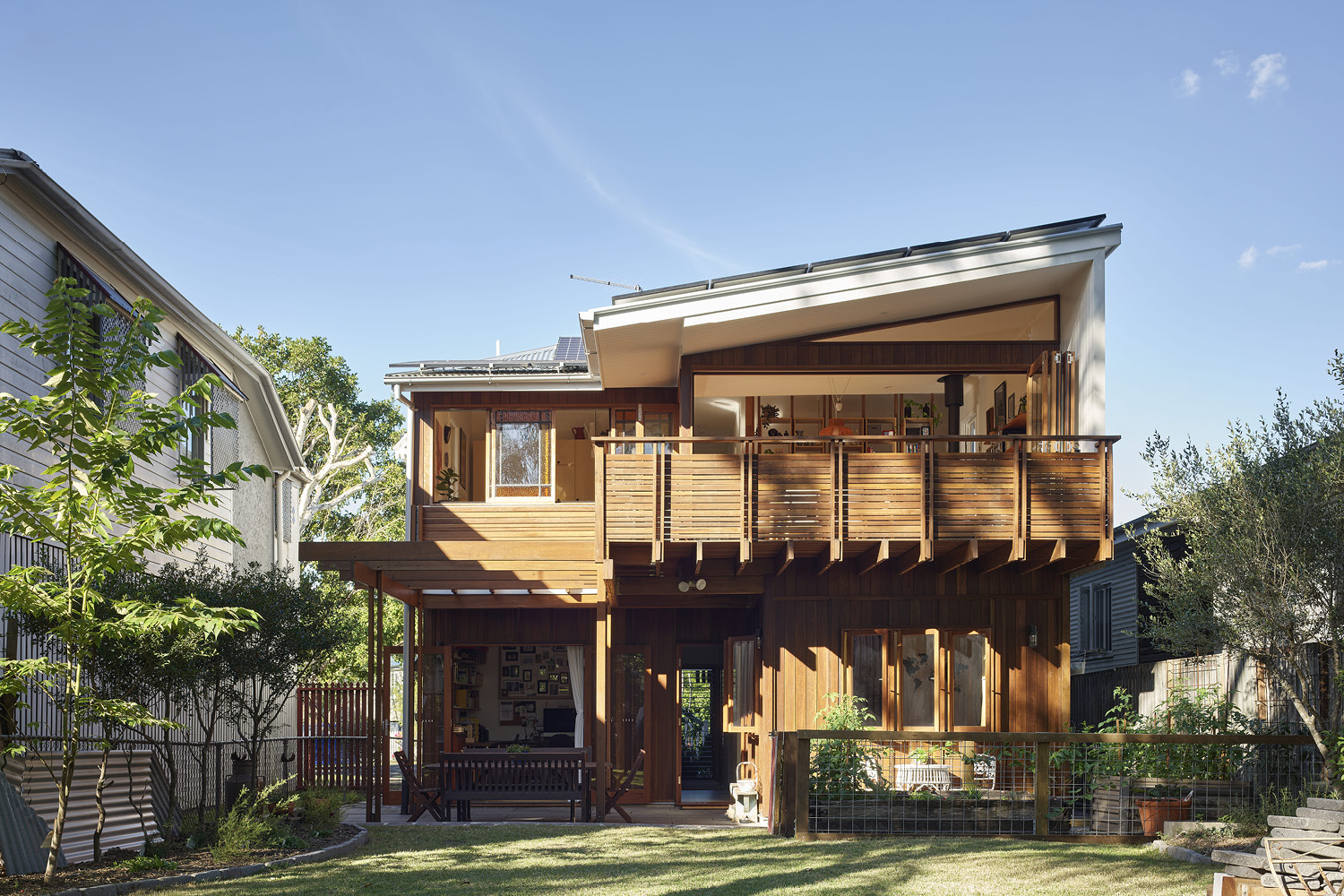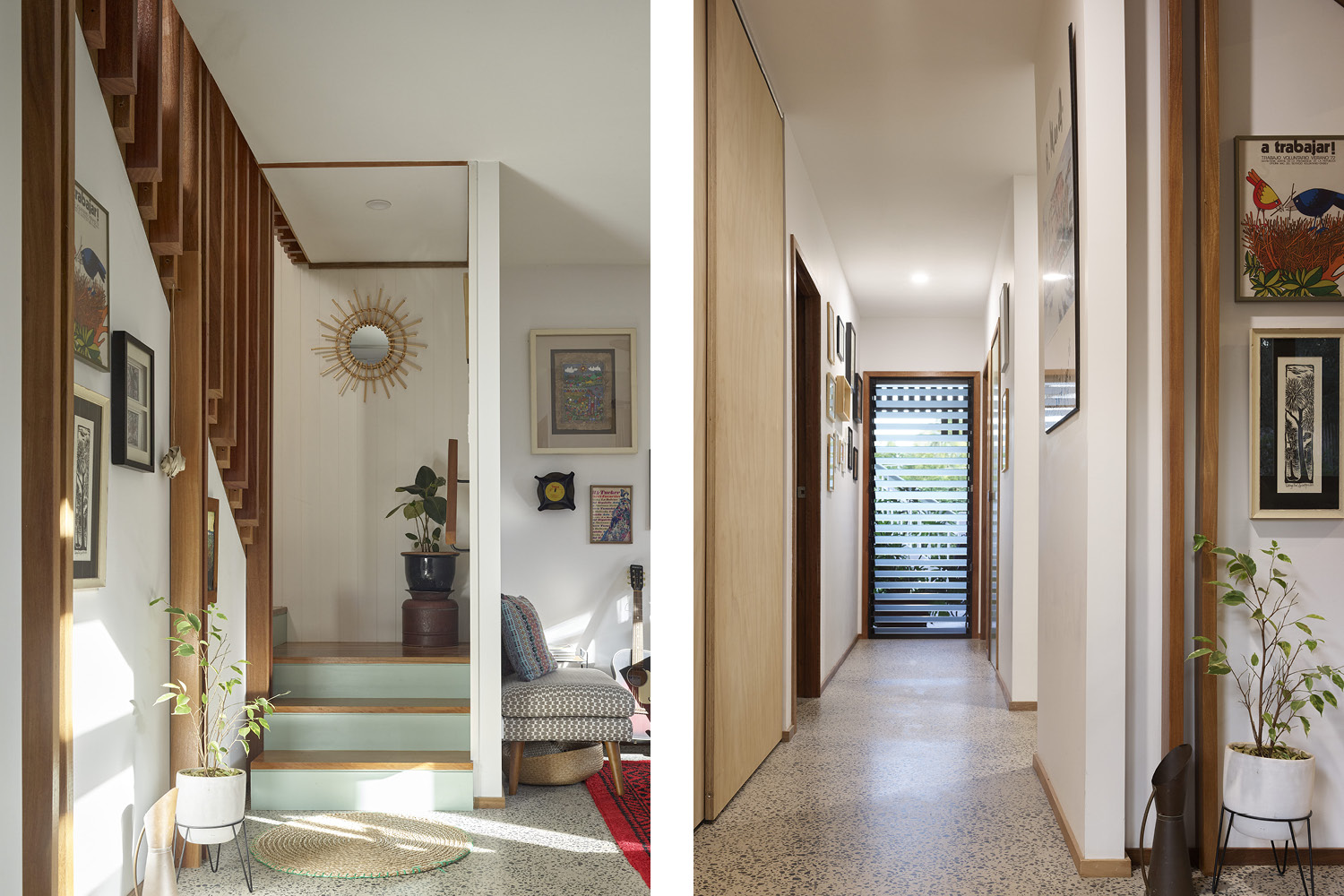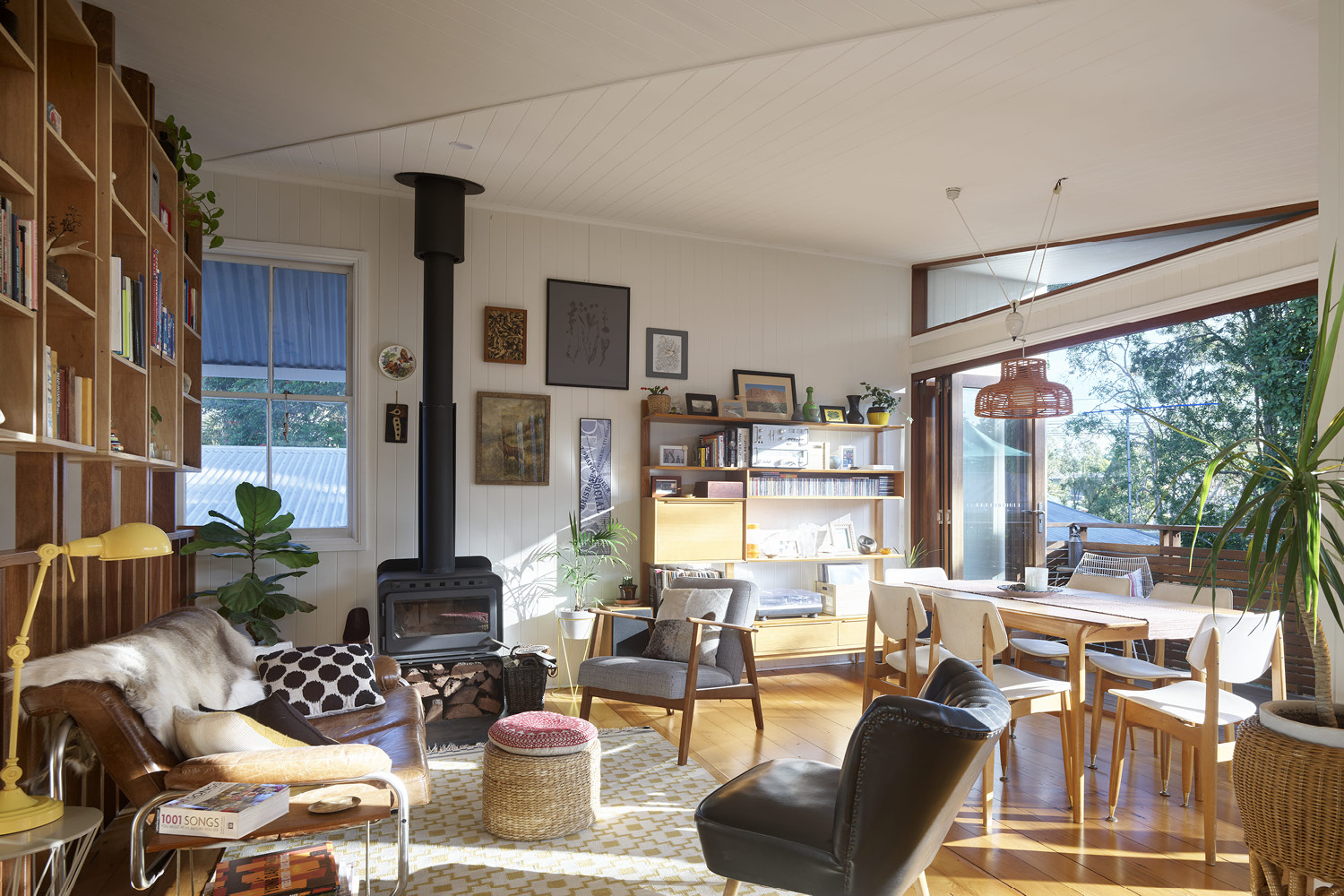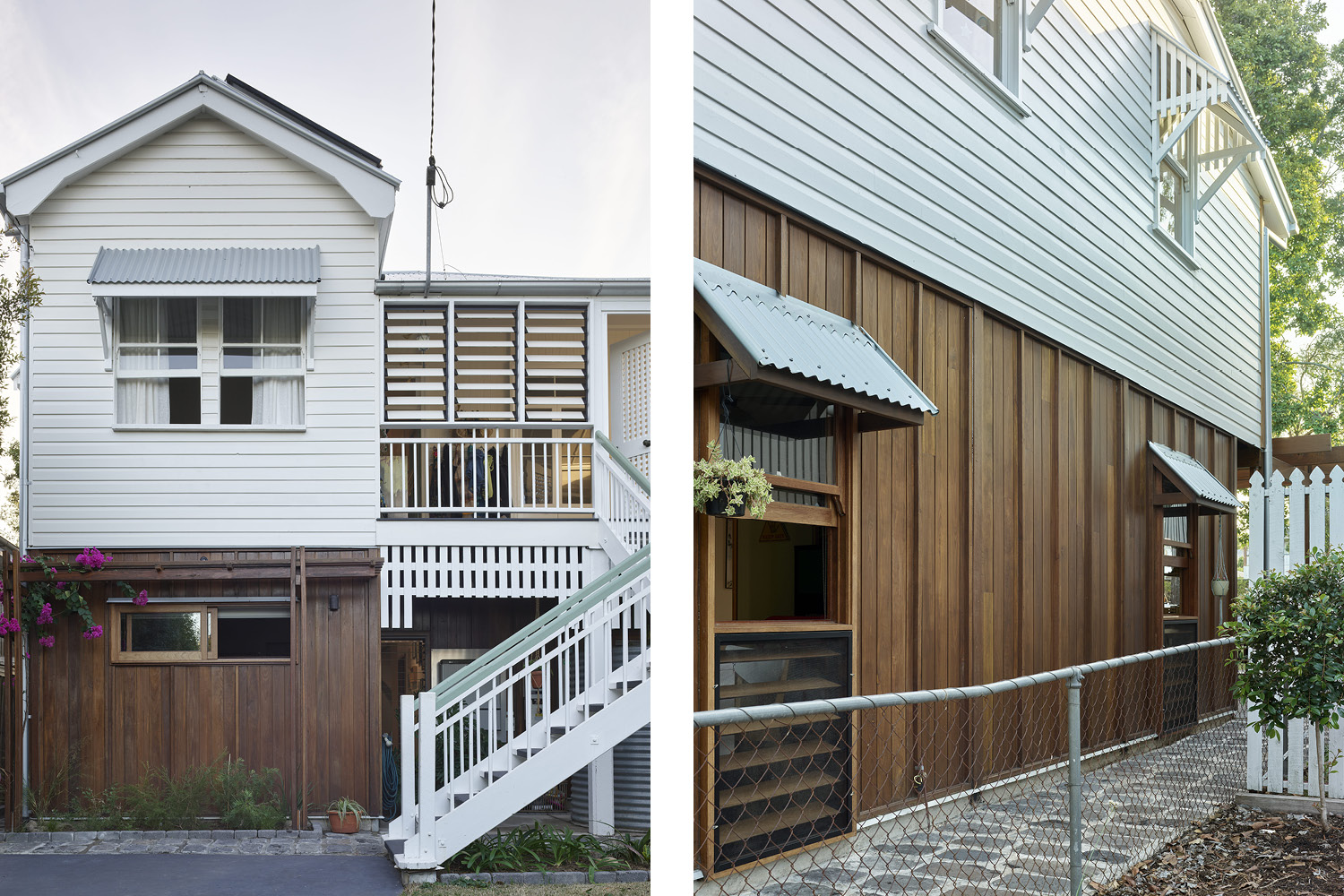Chelmer Flood House
JDA Co.
The Chelmer Flood House is a living example of JDA’s Co’s latest innovation in flood resilience, built on the practice’s knowledge and expertise developed over the last 10 years. Designed for a young family, this renovation called for a new flood resilient built-in undercroft for two bedrooms, a study and a rumpus room, with a rear extension to their existing upper living space. In keeping with the materiality of the existing Queenslander house, it is the first flood house with a completely timber external envelope that was designed and built according to the Flood Resilient Building Guidance for Queensland Homes that JDA Co developed and co-authored for the State Government’s Queensland Reconstruction Authority.
The ground floor level has been designed for flood resilience, with a suite of strategies to minimise damage and allow quick recovery after a flood event: large door openings, sills flush to the floor and low louvre windows allow for floodwater to be flushed out; polished concrete floors, hardwood skirting and stairs, raised services and single-skin, non-cavity walls.
A typical timber framed wall has a cavity for insulation and services, and is usually built with pine timber framing and has plasterboard wall linings that soak up polluted water and disintegrate or harbour mould before they can dry out. Through some clever detailing and careful consideration of materials, we developed a cavity-free hardwood-framed insulated wall design that would resist flood damage and mould growth after a flood event while keeping a traditional hardwood Queenslander aesthetic.
This project is the first time Earth Friendly Concrete (EFC) geopolymer has been used and polished for a residential build in Australia. Produced by Wagners, EFC is a new environmentally excellent class of concrete that contains no ordinary cement – instead it uses a geopolymer binder made from recycled industrial waste, significantly reducing CO2 emissions. It is a nearly 100 per cent recycled material, locally made that does not produce carbon dioxide.
Photography by Scott Burrows.




